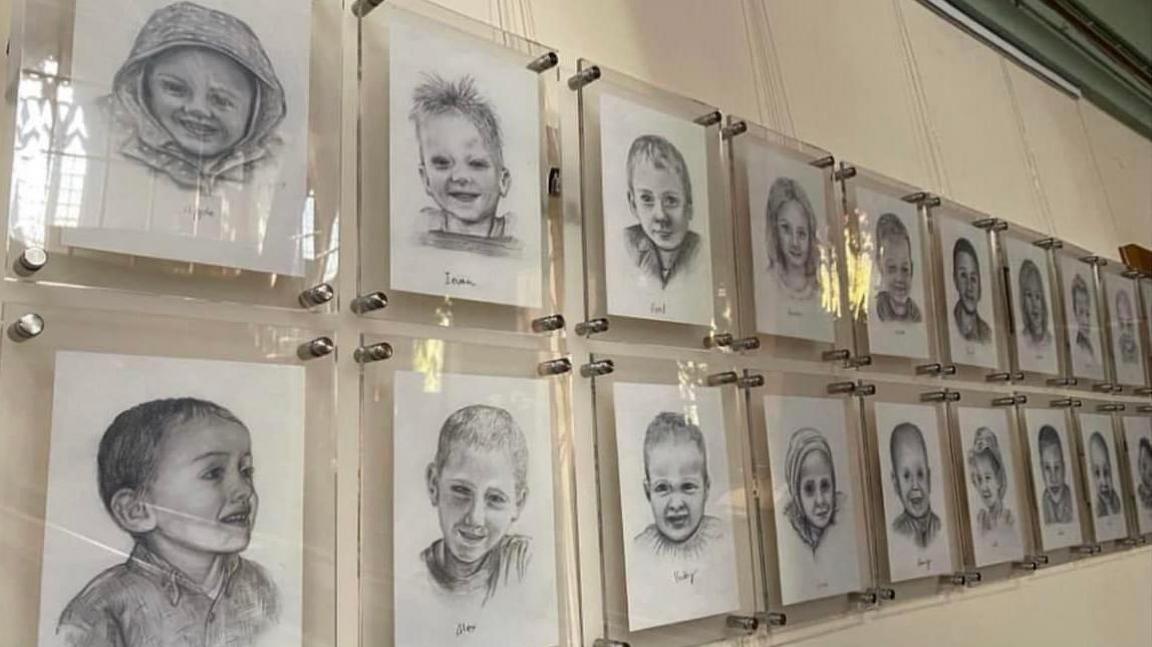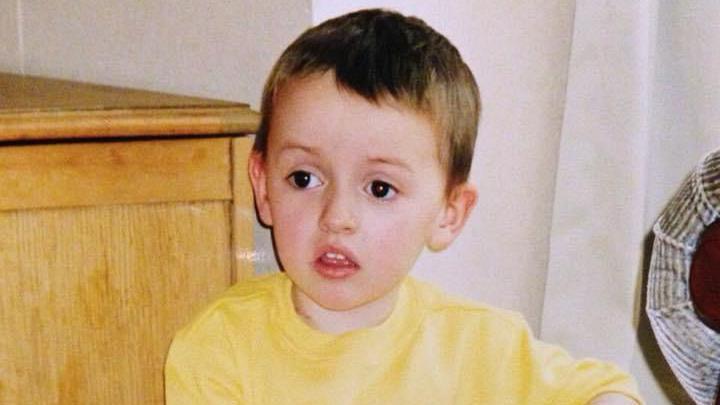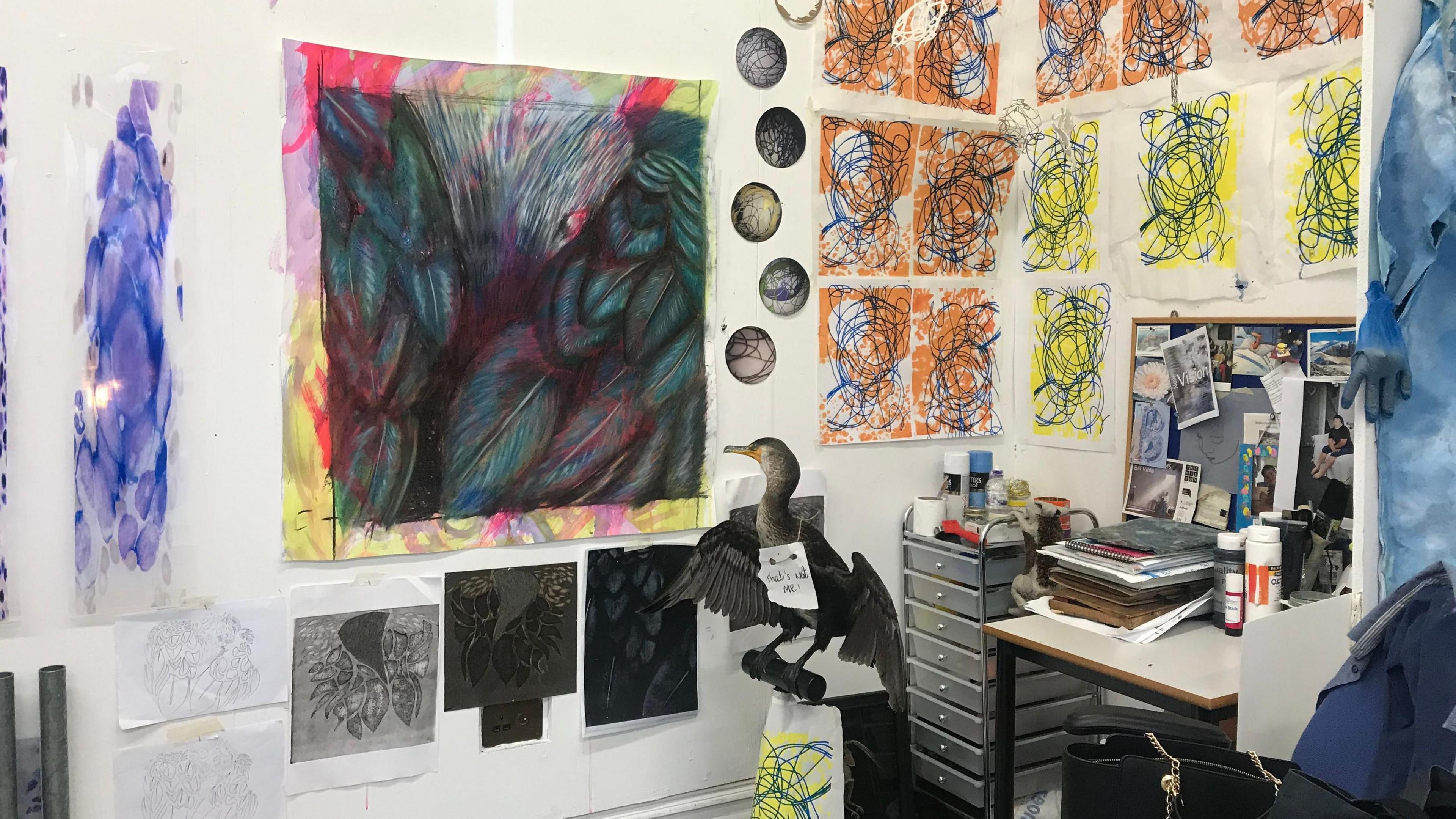Mother's portraits bring son 'back to life'

Artist Joanne Humphreys has created 40 portraits of children affected by neuroblastoma
- Published
A mother whose son died of cancer has said creating "beautiful" yet "sinister" artwork helps "bring him back to life".
Artist Joanne Humphreys, 60, from Cheltenham, uses cell images, MRI scans and finger paintings from her late son Graeme to create the work.
Graeme was diagnosed with the rare cancer, neuroblastoma, in 1998 and died aged just four on New Year's Eve in 1999.
“There needs to be some sort of good outcome from something that’s devastating and bad and tragic,” Ms Humphreys said.

Ms Humphreys has created an exhibition to coincide with Neuroblastoma UK's 40th anniversary
She has now created a series of 40 portraits to mark the 40th anniversary of the charity Neuroblastoma UK.
Ms Humphreys said that while Graeme was in hospital she could not focus on any art other than two quick sketches him, but that after he died she mapped out a “cathartic” project based on her experiences.
She experimented with Graeme's childhood finger paintings and neuroblastoma cell images - scans of cancer cells seen under the microscope - which she enlarged to create unique artwork illustrating his illness.
The project, called The Passing Of Time: 40 Portraits, depicts images of Graeme and 39 other children affected by neuroblastoma.

Graeme was diagnosed with neuroblastoma - a rare cancer - in January 1998, aged two
Graeme first became unwell just before his second birthday, suffering frequent chest infections for which he was initially given antibiotics by his GP.
But during a haircut weeks later, a lump was discovered on his head and at Christmas, Graeme developed a limp and cried “non-stop for four or five nights”.
Ms Humphreys said his symptoms were dismissed at least four times before they were told at Bristol Children’s Hospital that he had stage four neuroblastoma.

Ms Humphrey's art is based on her son's childhood finger paintings and neuroblastoma cell images
Ms Humphreys was told he would need to undergo treatment straight away but there were “no recognised treatments” at the time and only a couple of clinical trials available.
“It was hard to understand that," she said.
"We are in this modern world and children are dying from this cancer and there are no recognised treatments for it."

The family travelled in the last months of Graeme's life, before he died on New Year's Eve 1999
Throughout his treatment, including seven rounds of chemotherapy, his mother said she wanted to "know everything", insisting on seeing all of his scans.
While it was a “surreal, otherworldly situation”, she said: “I wanted to see what was killing my son.”
In November 1998 Graeme reached remission after a stem cell transplant, but by March 1999 the cancer had returned.
'My soul went with him'
Ms Humphreys said the shock of her son's death "numbed her".
"A big portion of my soul went with him,” she said.
But as an artist, she said she wants to ensure that children lost to neuroblastoma live on through her art.
Speaking about the 40 portraits, she added: “I wanted them to be talking with each other and to [show] the strengths of the children – they’re in unity together to speak of their experiences of life and death.
“They need to be somewhere for people to see, and when people see the portraits, their reaction is, ‘they’re all so beautiful'.”